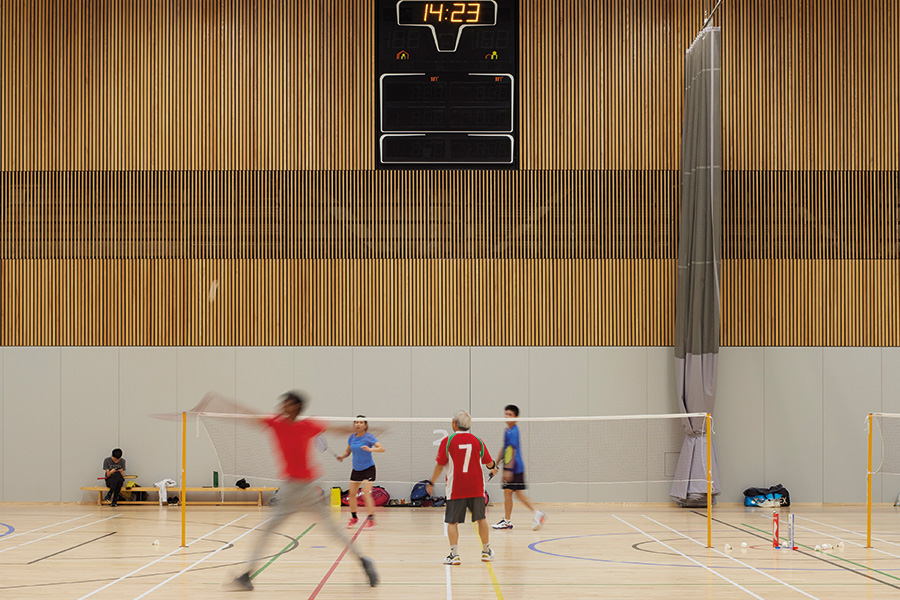A NEW sports and leisure complex built for the University of Portsmouth as well as the wider community designed by FaulknerBrowns Architects has set a new environmental standard in ultra-low energy consumption. With an operational energy consumption of less than 100 kWh/sq m/y, Ravelin Sports Centre uses only one-tenth of the energy demand of an equivalent sports centre. This is a landmark project which Junckers says it’s proud to have participated in, a unique collaboration between architects, manufacturers, the client and BREEAM.
The new building is fossil fuel-free and rated BREEAM Outstanding with extensive use of natural and sustainable materials, natural lighting and ventilation, air source heat pumps and heat recovery, including a bio-solar roof which reduces demand from the national grid by over 20%. The centre includes a swimming pool, a fitness suite, multi-activity studios, an eight-court sports hall, squash courts, climbing and bouldering facilities, a ski simulator and teaching facilities.
‘When the operational carbon in a building is lowered, selecting materials with low embodied carbon becomes increasingly important,’ says Irina Korneychuk, senior associate at FaulknerBrowns Architects. ‘Specifying Junckers sports flooring fulfilled many criteria – durability, longevity, recyclability, and flexibility of use, which had a positive impact on the BREEAM assessment.’
The large sports hall has been fitted with 1,600sq m Junckers SylvaSport Premium solid beech flooring installed by Junckers’ approved contractor Hutchison Flooring.
Says the company: ‘Well-known for its high quality, performance and user safety, Junckers’ sports flooring also meet the strict criteria for sustainability and longevity required for a building of this standard. Wood is naturally low in embodied carbon, a consideration which comes more into focus when operational carbon is reduced.
‘Junckers’ solid wood floors are sourced from managed forests with chain of custody certification through FSC and PEFC and the company holds product specific EPDs for its flooring. With a proven long lifespan, a solid wood floor also scores highly when comparing maintenance, refurbishment, and replacement cycles.
‘A Junckers 22mm solid beech floor can be sanded and refinished eight to 10 times without loss of performance, and with typical 12-year intervals between refurbishments, a design life of 60 plus years is easily achieved. An important part of future-proofing new buildings is recognising how a large percentage of embodied carbon is emitted post-completion when finishes need to be refreshed and replaced.
‘At the same interval when a Junckers floor can be sanded and refinished, other sports flooring surfaces normally have to be replaced. This can lead to excessive use of raw materials and energy, unnecessary carbon emissions and pressure on landfill sites, especially in relation to surfaces made from fossil fuel derived materials such as vinyl and PU floors.’
Continues Junckers: ‘Flexibility is another key consideration when building for a long design life. Leisure trends come and go but a multi-use sports hall is a timeless component of any leisure centre. The ability to use the flooring surface with its sprung undercarriage system for a multitude of sports, dance, performances, and competitions is crucial. Junckers sports flooring is widely used globally for all ball and racquet sports, dance, ballet, yoga, and other exercise studio-based activities. It’s even hard-wearing enough to accommodate wheelchair rugby and retractable seating systems.’
01376 534700
@junckerfloors
www.junckers.co.uk


